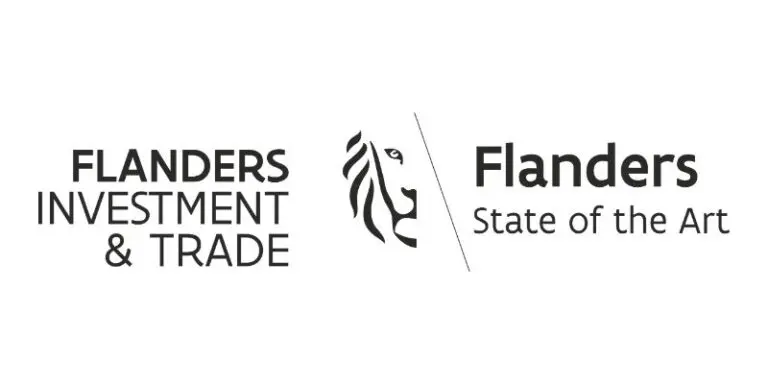Sales forecasting is a prediction of the amount of sales, turnover or profit you expect to make in the future with your service or product, based on calculations.
In this article we explain how to set up good sales forecasting, what you need for this and what tools you can use.
Parts that help you make a calculation
In sales forecasting, you base your calculations on past results combined with figures that are already known.
- When it comes to the past, you don't count one year but multiple years. That way you will get the best possible picture.
- In addition, you use data from your industry Or do you take trends in today's economy that actually affect your sales or profits.
- If it concerns a new customer, it is not possible to do your sales forecasting on the basis of previous data. However, you can then look at the data of similar customers in your systems in order to arrive at a certain prediction.
- It is often useful to have a market research to make a prediction.
Questions that help with sales forecasting
To help you make your calculations even clearer, ask yourself the following questions:
- How long does it take for a prospect to show interest in your service or product?
- What percentage of prospects actually become customers?
- How long does it take to close a deal?
- What is the average order value or average rate?
- What is the length of the onboarding process
- How long does a customer stay on average (including average renewals)
- How often on average does a customer make a repeat purchase?
- How high is the customer turnover?
What does sales forecasting give you?
By applying sales forecasting, you create insight into how you can best use resources, capacity and budget to let your organisation grow. This allows you to make better decisions and to foresee opportunities and threats faster.
The most important thing in making a good sales forecast is to keep the correct data on which you make your prediction.
Methods for sales forecasting
There are several methods you can use to make a good sales forecast.
1. Stages in the sales process
With this method, you make a forecast based on the different stages a prospect goes through before becoming a customer. Here is an example:
- When a prospect shows interest in your service or product, there is always a conversation first. Then the prospect receives a demo and later your offer.
- In your forecast, you look at how many prospects are in the conversation phase. The chance that these prospects will become customers at that moment is 25%.
- Next, you look at how many prospects are in the demo phase. The probability of this group of prospects becoming customers is 50%.
- For the prospects who have already received an offer from you, you calculate a chance of 75% that they will become customers.
The disadvantage of the above calculation is that the average sales cycle and the corresponding time required are not included in the calculation. And it makes quite a difference whether a prospect goes through all the stages within a week and is very enthusiastic, or if it takes three months.
2. Average sales cycle based on historical data
For a sales forecast, you can also look at the average sales cycle that applies to your service or product. That way you know approximately how much time elapses between the first contact with a prospect and the signing of a quotation.
The calculation you then apply is as follows: suppose your sales cycle is 4 months. After 1 month, you calculate that a new prospect has a chance of 25% to become a customer. After the second month it is 50% and after three months you calculate with a chance of 75% and so on.
Do collect and record all data from the first prospect contact.
3. Pipeline analysis
With this method, you look at which prospects are in your pipeline, how long they have been there and what stage they are at. To apply this forecasting method, you really need some more advanced techniques to make the calculation.
4. Input from your sales team
You can also rely on the input of the salespeople in your team. They will then estimate when a deal will close, and for how much. This method is actually only applicable for new customers, as there is no data available from previous years.
For sales forecasting at existing customers This method is somewhat imprecise and therefore not recommended. Sellers tend to overestimate expected turnover.
Mix of different methods
If, as an organisation, you want to make the best possible sales forecast, you should actually apply all the methods described above. The more data you have on the past few years, the better image you get and the better predictions you can make for the future.
Sales forecasting tools and resources
CRM system
In a CRM system, you follow up on leads, keep track of how many and what you sell to which type of customer, and you can make reports based on this data.
Spreadsheets (Excel or Google Sheets)
If you are a start-up and a CRM system is not yet on the agenda, you can of course keep track of the above data in a spreadsheet. It is flexible and you can gather really interesting sales data based on formulas and graphs.
However, it takes a lot of time, is more prone to errors and when the organisation grows larger, such a tool may be a bit too limited.
Sales analysis tools
There are also many analysis tools on the market that help with forecasting, tracking and presenting data and providing insight into the sales pipeline.
Lead scoring tools
With lead scoring, you assign a weighting to your leads, which helps you estimate the likelihood of them actually becoming a customer. Elements that help determine such a weighting include the activities of these leads on your website (which pages were visited, how long was the lead on the page, was there a contact request, or a download of something).
Lead scoring tools help you divide your leads into different baskets, each of which requires its own approach or follow-up step. These tools also help you personalise your message so that it better meets the needs of your leads.
Accounting software
With an accounting programme, you can also see what costs are in relation to the turnover. This gives you a clearer picture of the final profit that will sharpen your sales forecasting.
Sales Artificial Intelligence tools
Sales AI systems perform tasks for you that you would otherwise have to do with human intelligence. This kind of software is programmed in such a way that it connects many data sources and analyses them. The result: factual insights based on historical data that become predictive.
Using an AI system as a sales forecasting tool saves time and capacity. AI is a perfect tool for working accurately and precisely to get the right data.
The benefits of AI in sales forecasting
Sales forecasting based on AI offers the following advantages:
- It analyses unexploited data that the human eye overlooks.
- It exposes hidden connections.
- It predicts future actions of your customers or prospects.
- It helps to assess and prevent customer failure.
- It establishes customer profiles based on actual data.
- It helps next best action to determine.
Trendskout Sales Booster
With the Trendskout Sales Booster you have a complete Sales AI software We offer you a package consisting of an umbrella system with many plug-ins. With these, we easily customise the software for your organisation. This saves a lot of programming, making it possible to implement the AI system for a concrete business case in just a few days.
Read more about the business case of Coeman Packaging.
Our accessible software not only offers a faster and more flexible turnaround, but also higher profitability. This makes it worthwhile to work with sales AI even for smaller projects.
Do you also apply Sales AI? Then we, as AI companies, will be happy to assist you. Contact Feel free to contact one of our employees.


